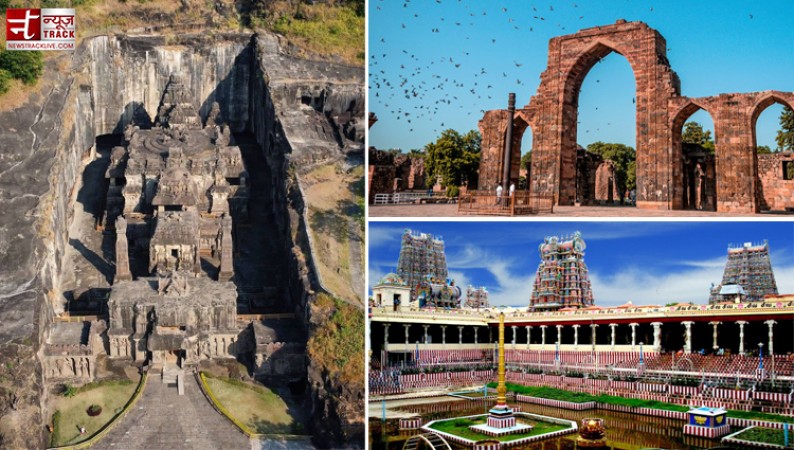
Engineer's Day in India, commemorated on the birthday of the eminent engineer Sir Mokshagundam Visvesvaraya, is not only a tribute to his remarkable contributions but also an acknowledgment of India's deep-seated engineering heritage. Throughout its history, India has showcased exceptional engineering prowess through a series of awe-inspiring achievements that continue to captivate the world.
Carving Mountains into Architectural Wonders: The Ajanta and Ellora Caves (circa 2nd century BCE - 480 CE)
Ancient Engineering Marvels
One of the earliest examples of India's ancient engineering ingenuity is the art of carving mountains to construct breathtaking temples. The Ajanta and Ellora caves, celebrated archaeological sites, stand as testaments to this extraordinary craftsmanship. These rock-cut cave complexes, adorned with intricate sculptures and stunning architecture, date back to as early as the 2nd century BCE. They are not only a testament to the artistic brilliance of ancient Indians but also showcase their engineering acumen.
The Kailasa Temple in Ellora, believed to have been constructed between the 7th and 8th centuries CE, stands out as a true marvel. Carved entirely from a single colossal rock, this architectural masterpiece reflects the extraordinary dedication and unmatched craftsmanship of ancient Indian engineers.
The Grand Anicut Dam (circa 2nd century CE)
Functional for Over Two Millennia
Another remarkable showcase of India's ancient engineering brilliance is the Grand Anicut Dam, an engineering marvel constructed over 2000 years ago on the Kaveri River. This dam, built around the 2nd century CE, continues to function seamlessly today, highlighting the timelessness, durability, and effectiveness of ancient Indian engineering techniques. This enduring infrastructure serves as a testament to the visionary engineering solutions employed by our ancestors.
India's Legacy of Engineering Marvels: The Qutub Minar (circa 12th century) and Chand Baori (circa 9th century)
Architectural Wonders Through the Ages
India's engineering heritage extends beyond ancient times. The Qutub Minar, constructed in the 12th century, is a towering testament to medieval Indian engineering. This UNESCO World Heritage Site in Delhi showcases intricate Islamic architecture and precise engineering, with its remarkable height and intricate carvings.
Chand Baori, located in Rajasthan, is a colossal stepwell that exemplifies India's excellence in water engineering. Built around the 9th century, this architectural marvel features over 3,500 steps and serves as both a source of water and a remarkable example of innovative water conservation techniques employed by our ancestors.
Architectural and Metallurgical Marvels: The Iron Pillar (circa 4th century CE)
Standing Tall Through Centuries
The Iron Pillar in Delhi, believed to have been constructed around the 4th century CE, is a testament to India's metallurgical engineering prowess. This rust-free iron pillar, standing tall through centuries, showcases not only advanced metallurgical skills but also engineering excellence.
Ancient Rock-Cut Marvels: The Barabar Caves (circa 3rd century BCE)
Early Architectural Feats
The Barabar Caves in Bihar, believed to have been carved in the 3rd century BCE, are remarkable rock-cut structures that represent early architectural feats in India. These caves exhibit precise engineering in their construction, with polished surfaces and architectural details.
South Indian Temple Architecture: Meenakshi Temple (circa 17th century)
A Fusion of Art and Engineering
The Meenakshi Temple in Madurai, constructed around the 17th century, stands as an exquisite example of South Indian temple architecture. Its intricate design and structural precision reflect the fusion of art and engineering in Indian temple construction.
Engineer's Day: Celebrating India's Engineering Heritage
Inspiring Generations
Engineer's Day is more than just a day to honor our engineers; it is a celebration of these exceptional engineering achievements deeply woven into India's cultural and historical fabric. From the ancient wonders of the Ajanta and Ellora caves, the enduring Grand Anicut Dam, and the architectural marvels of the Qutub Minar and Chand Baori to the metallurgical excellence of the Iron Pillar, the rock-cut brilliance of the Barabar Caves, and the intricate design of the Meenakshi Temple, these remarkable examples remind us that engineering in India is an age-old tradition of innovation and problem-solving that has left an indelible mark on the world. These accomplishments stand as a testament to the enduring legacy of India's engineering heritage, inspiring and astonishing generations to come. As we celebrate this day, we pay tribute to the innovators, visionaries, and engineers who continue to shape our nation's progress.
Building a Lunar Home: The Essentials for Human Settlement on the Moon
Hindi's Rich Heritage: From Ancient Roots to Modern Influence
Enthusiastic Supporters Gather as CM Yogi Adityanath Pays Respects to Lokmata Devi Ahilya Bai Holkar